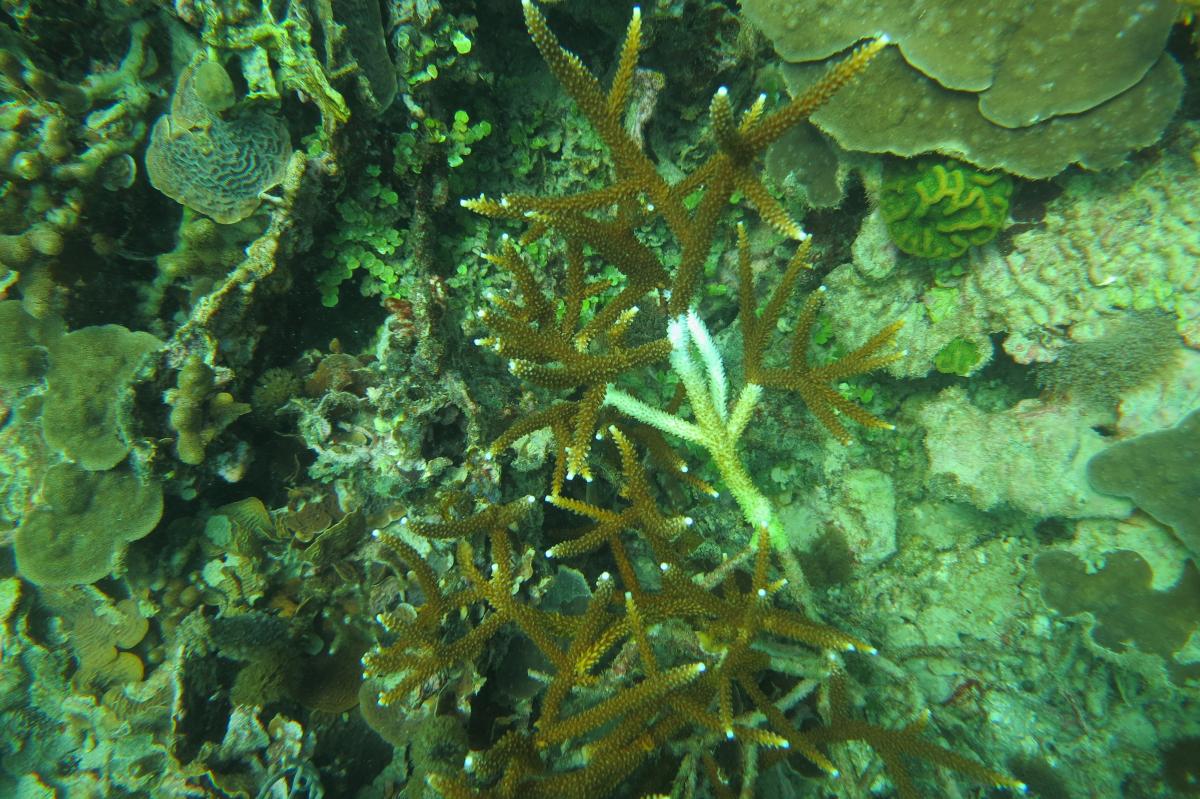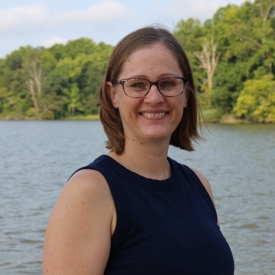by Kristen Minogue

White band disease has stripped tissue off one branch in this cluster of staghorn coral, turning it pale yellow and white. (Photo: Sarah Gignoux-Wolfsohn
Parasitic slime nets attacking seagrasses. A disease that melts coral tissue down to the skeleton, whose exact cause remains unknown. If these aren’t the first places you’d look for optimism, you’re not alone.
Katrina Lohan heads SERC’s Marine Disease Ecology Lab. She and postdoc Sarah Gignoux-Wolfsohn studied both ailments in Florida. They look for hope in the microscopic realm of DNA.
This January they published two papers searching for microbes infecting seagrasses and corals, using a technique called metabarcoding. Metabarcoding makes thousands of copies of one tiny DNA section. By targeting DNA common to many organisms in a sample, biologists can sequence—and if they’re lucky, identify—every organism present.
“Genetics is really cool, because it offers you a much better picture of what’s actually present,” Lohan said.
Read more on SERC's Shorelines blog

